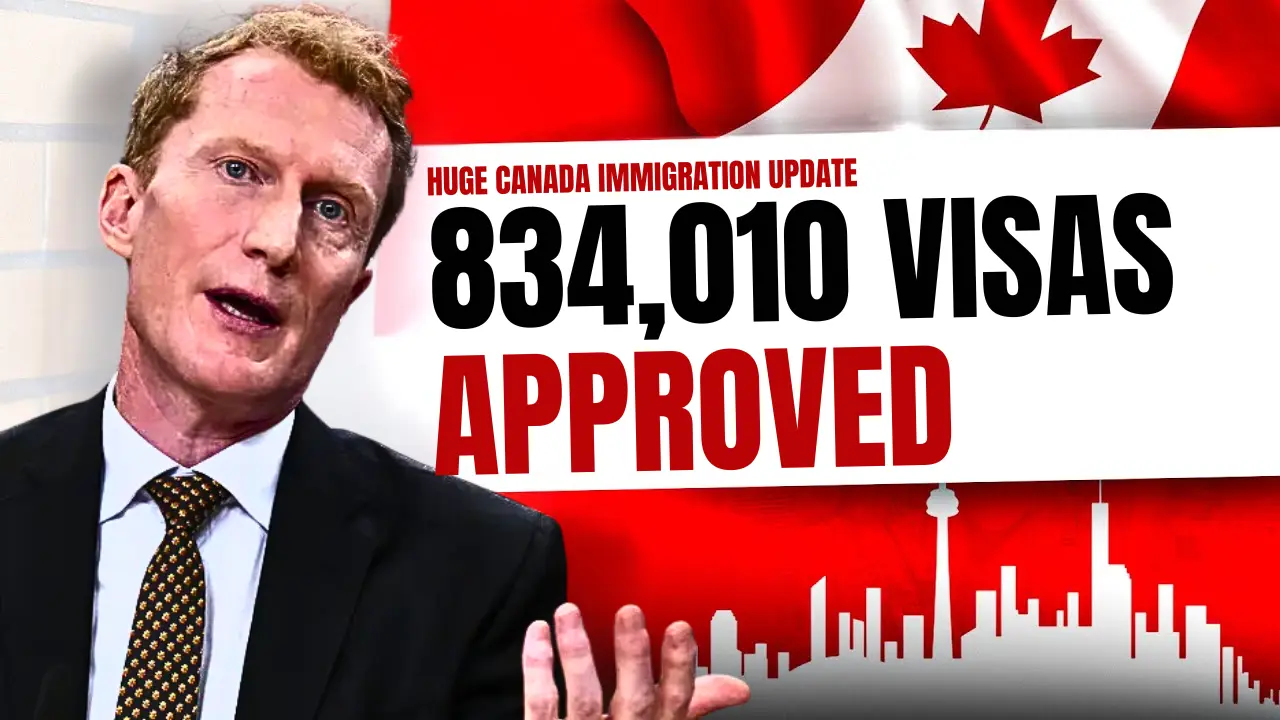In the first quarter of 2025, Canada approved 834,010 temporary resident applications and extensions, encompassing study permits, work permits, and visitor visas. This significant figure underscores Canada’s ongoing commitment to attracting international talent and visitors. However, it also highlights the complexities and challenges within the country’s immigration system.
Breakdown of Temporary Resident Approvals
Study Permits
Canada approved 96,015 study permits in Q1 2025, reaffirming its status as a premier destination for international students. These permits are granted to foreign nationals enrolled in programs lasting six months or more at Designated Learning Institutions (DLIs). A substantial number of these students aim to transition to permanent residency through pathways like the Post-Graduation Work Permit Program (PGWPP).
Work Permits
The country issued 186,805 work permits during the same period, primarily through the Temporary Foreign Worker Program (TFWP) and the International Mobility Program (IMP). These permits address labor shortages in critical sectors such as healthcare, agriculture, and technology, aligning with Canada’s economic priorities.
Visitor Visas
Visitor visas, also known as Temporary Resident Visas (TRVs), accounted for 273,990 approvals. These are typically granted to individuals from visa-required countries for purposes like tourism, family visits, or business engagements.
In total, Immigration, Refugees and Citizenship Canada (IRCC) processed 1,370,400 applications (including extensions) in Q1 2025. This indicates a rigorous screening process to ensure compliance with the Immigration and Refugee Protection Act (IRPA).
Top Source Countries for Temporary Residents
The diversity of applicants reflects Canada’s multicultural ethos. The top ten source countries for processed temporary resident applications from January to March 2025 are:
-
Bangladesh: 27,080 applications, with a growing number of students and temporary workers.
-
Iran: 49,735 applications, driven by students and professionals seeking opportunities in Canada.
-
People’s Republic of China: 100,890 applications, with significant participation in the International Student Program and tourism.
-
Mexico: 59,305 applications, supported by free trade agreements and seasonal worker programs.
-
Nigeria: 104,835 applications, indicating growing interest in Canadian education and employment opportunities.
-
Philippines: 48,430 applications, with many pursuing work permits in caregiving and hospitality sectors.
-
Ukraine: 33,110 applications, reflecting Canada’s support through initiatives like the Canada-Ukraine Transitional Assistance Initiative.
-
Pakistan: 31,355 applications, comprising students and workers contributing to Canada’s workforce.
-
Colombia: 27,165 applications, mainly in study and work permit categories.
-
India: 382,055 applications, predominantly for study and work permits.
Policy Shifts and Temporary Resident Targets
The 2025–2027 Immigration Levels Plan, announced on October 24, 2024, introduced for the first time specific targets for temporary residents. The plan aims to reduce the temporary resident share to 5% of Canada’s population by 2026. The targets are as follows:
-
2025: 673,650 new temporary resident arrivals
-
2026: 516,600
-
2027: 543,600
These figures focus on new arrivals holding study and work permits, excluding short-term visitors and seasonal workers.
Measures to Achieve Targets
To align with these targets, IRCC has implemented several measures:
-
Study Permit Caps: A 10% reduction in study permit applications for 2025 compared to 2024, setting a cap of 606,250 applications processed in 2024 as a benchmark.
-
Post-Graduation Work Permit Reforms: Tighter eligibility criteria to align with labor market needs, prioritizing in-demand fields like health and trades.
-
Work Permit Restrictions: Changes to open work permits for spouses of international students and workers, effective January 21, 2025, limiting eligibility to specific high-demand occupations.
Enforcement and Compliance
While welcoming new temporary residents, Canada is also enforcing stricter compliance measures. IRCC and the Canada Border Services Agency (CBSA) have the authority to cancel temporary resident documents in cases of fraud, inadmissibility, or failure to leave by the end of the authorized stay.
Recent reports indicate that some temporary residents are receiving notices to leave, particularly those whose permits have expired or who have violated conditions, such as unauthorized work or study.
Economic Impacts
Temporary residents contribute significantly to Canada’s economy. International students bring in billions through tuition fees and living expenses, while temporary workers fill critical gaps in sectors like healthcare, agriculture, and construction. Visitor spending also boosts tourism, a key driver of GDP.
However, the high volume of newcomers has strained housing and public services, prompting IRCC to implement measures to balance economic growth with sustainable immigration levels.
Challenges and Criticisms of Temporary Resident Approvals
The surge in temporary resident approvals has sparked debate. Stakeholders, including business leaders and immigrant service providers, support managed immigration but emphasize the need for clarity in policy changes.
Critics argue that the simultaneous approval of new residents and deportation notices creates confusion and undermines Canada’s image as a welcoming nation. The reduction in temporary resident volumes has also raised concerns in sectors reliant on foreign workers, such as agriculture and hospitality, where labor shortages persist.
Additionally, international students face challenges with rising living costs and stricter language requirements, potentially deterring future applicants.
On the other hand, supporters of the policy argue that stricter enforcement ensures fairness and prevents abuse of the immigration system. The focus on transitioning temporary residents already in Canada to permanent residency—over 40% of 2025 permanent resident admissions will come from this group—aims to leverage existing talent while reducing external pressures.
Navigating the Path Forward in Temporary Resident Visa Trends
Canada’s approval of over 834,000 temporary resident applications in Q1 2025 reflects its enduring appeal as a global destination. However, the simultaneous enforcement of departures and reduction targets signals a shift toward a more managed immigration system.
As IRCC balances economic growth, humanitarian commitments, and public concerns, the coming years will test Canada’s ability to maintain its reputation as a welcoming yet sustainable destination.
For those aspiring to study, work, or visit Canada, staying informed about evolving policies and compliance requirements is crucial. Prospective applicants should regularly consult official resources such as the IRCC website for the latest information. Maple Crest Law offers just the right professional guidance that you need.
Note: This article is based on data and policies available as of June 5, 2025. For the most current information, please refer to official government sources.




